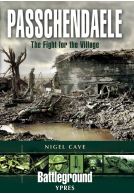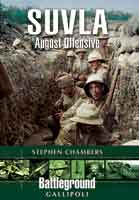Directing the Tunnellers’ War (Hardback)
The Tunnelling Memoirs of Captain H Dixon MC RE
Imprint: Pen & Sword Military
Pages: 240
Illustrations: 32 black and white illustrations and additional maps
ISBN: 9781526714411
Published: 17th December 2020
(click here for international delivery rates)
Need a currency converter? Check XE.com for live rates
| Other formats available - Buy the Hardback and get the eBook for £1.99! | Price |
|---|---|
| Directing the Tunnellers’ War ePub (74.4 MB) Add to Basket | £6.99 |
The original version of this memoir was entitled The Lighter Side of a Tunneller’s Life; he has hoped to get it published in the late thirties, but this was a period when many publishers considered that there was ‘memoir fatigue’ as regards the Great War – and a new war was looming.
With a background in mining and tunneling (the internal evidence suggests that some of this was done in South Africa), he served with a Tunnelling Company and was then transferred to GHQ in Montreuil to handle mining plans and records. The British organized their mining at Army and GHQ level, with a close control on operational activity being reserved to GHQ. In due course he was appointed as one of the Assistant Inspectors of Mines, a small group of Royal engineers’ officers who operated as the eyes and ears of the Inspector of Mines, who exercised overall control on mining operations. His activity in this role is particularly important for the period after the June 1917 Messines Offensive, when the use of mining for blows against the enemy substantially diminished – indeed, all but disappeared – and the tunneling companies were reallocated to a new range of tasks.
His manuscript, produced in 1933, was intended for publication, but remained no more than a draft, rescued some time ago by one of the editors from the Royal Engineers’ archives at Chatham.
Dixon remarks that the carnage and horrors of war have been deliberately omitted, for enough and to spare has been written about these aspects by countless others. His manuscript, alternatively, provides a valuable insight into the overall conduct of mining operations and the tactical and strategic considerations that rarely feature in other accounts.
He was at the centre of staff activity that set about countering the effects of the German Kaiserslacht offensives in March, April and May 1918, and the preparations for a possible German breakthrough to the channel ports. Subsequently, with the allied advances of the ‘Last Hundred Days’, he became considerably occupied by the hazards of dealing with delayed action mines and booby traps.
Aside from these tactical and strategic considerations, he recounts, by means of numerous humorous anecdotes, the personalities and work of the staff at GHQ, ranging from humble clerks and the misdemeanors of his batman to senior officers. He brings to life the exceptional endeavours of the often maligned senior staff and the individual characteristics of many senior staff officers who are otherwise but shadows in accounts of the Great War.
The editors have added extensive notes explaining and, on occasions correcting, Dixon’s accounts; these are illustrated with explanatory plans and diagrams along with photographs of many of the personalities he describes. The combination provides a very personal perspective of the conduct of the war at GHQ.
As featured by
Pennant Magazine - Autumn 2023, No.180 - THE JOURNAL OF THE FORCES PENSION SOCIETY
[This review first appears in the April 2021 edition of Stand To!. No.122]
Stand To! Magazine
Directing the Tunnellers’ War: The Tunnelling Memoirs of Captain H R Dixon MC RE by Phillip Robinson and Nigel Cave (Eds)
Herbert Dixon, a civil engineer, joined the Middlesex Regiment in 1914 as a private. His abilities were soon recognised. Commissioned into the Royal Engineers he became a trainer in bomb making and the throwing and use of explosives, before volunteering for a role in tunnelling and deployment to France in February 1916. After experience with 255 Tunnelling Company and 23rd Divisional tunnellers he joined the staff of Brigadier General Robert Harvey, Inspector of Mines at GHQ, based at Montreuil in late 1916.
Dixon’s memoirs were written post war while he was working in China without either his notes or his wartime diary, which he had left in Britain. His account is deliberately sober. He wrote ‘the carnage and horrors of war have been omitted for enough has been written about these aspects’. In writing Directing the Tunnellers’ War, the author offers a fascinating account of his experiences when tunnelling as well as those, senior and junior, he worked with at GHQ. By 1916, approximately 30,000 men were engaged in tunnelling. Each company comprised some 550 officers and other ranks, almost none of whom were regular soldiers. The book’s experienced editors, Phillip Robinson and Nigel Cave, put the role of the tunnellers in context, as they do the development of tunnelling operations and the dangers and difficulties of tunnelling. They also enhance Captain Dixon’s original memoirs. Of particular interest is ‘Operation Strandfest’ in June 1917, a German spoiler attack near Nieuport, which Dixon describes was intended to disrupt Operation Hush, the British seaborne element of Third Ypres, which was cancelled.
The basics of mining on the Western Front were known to this reviewer not least through the work of ‘tunneller and arsonist’ John Norton–Griffiths and his ‘clay kickers’. However, the engineers involved in tunnelling came from all over the Empire and beyond including a Portuguese Tunnelling company serving with the BEF in 1917.
The character studies of GHQ personnel are equally interesting, with humorous observations of George Fowke (Chief Engineer), Norton–Griffiths, Geddes, Edgeworth David, ‘Tavis’ Davidson, Edmonds and many more. Mining on the Western Front was much diminished after the Messines operation, which Dixon witnessed, and the tunneller’s work was redirected to booby trap and mine clearance during the 1917 German retreat and the 100 days of 1918. (The vicious ingenuity of the traps described by Dixon ensures that this reviewer shall never look at a dead mule quite the same again!) Less well known, is the author’s explanation of the ‘Z Scheme’, the demolition of communications behind the retiring BEF should Operation Georgette (in April 1918) have proved successful. He also covers in some detail the bridge building expertise developed by the tunnellers during the ‘Advance to Victory’. Pen & Sword’s presentation is attractive and other than the odd wrong date and typo there is nothing to criticise. An enjoyable read at good value, which I recommend.
This book is an essential one to have to understand the various aspects of the Tunnelling war.
Jon Sandison
Read the full review here
Captain Herbert Dixon wrote his memoirs in the 1930’s but his manuscript lay undisturbed in the archives of the Royal Engineers until discovered by retired Sapper, Colonel Phillip Robinson. He and Nigel Cave are long standing members of the Durand Group, who have been exploring, rendering safe and charting the extensive network of tunnels on the Western Front for almost thirty years. Both are well known Great War historians and Phillip has an unrivalled passion for and knowledge of tunnelling and mining operations. Much has already been published on the subject, notably the well known early official history “Tunnellers” by Captain W Grant Grieve which was published in 1936, but many of the War Diaries for individual units are sparse and therefore personal accounts are invaluable when studying tunnelling operations generally and the activities of specific tunnelling companies. From early 1916 Herbert Dixon served underground with 255 Tunnelling Company RE until the end of the year when he was transferred to GHQ in Montreuil. At GHQ he initially had responsibility for the planning and conduct of tunnelling and mining operations under the Inspector of Mines and latterly on promotion to Captain he was tasked with visiting tunnelling units at the Front, including those committed to the spectacular mining operations at Messines and Vimy Ridge, and reporting back to GHQ. Herbert Dixon writes clearly and graphically of his experience of tunnelling operations at all levels from the highly dangerous subterranean work of the tunnelling companies to the frustrations of working with the General Staff at GHQ. The editors are to be congratulated on the way in which they have skilfully blended Dixon’s original narrative with notes of context, explanatory and, where appropriate, technical details, biographical notes and a wealth of photographs, diagrams, sketch maps and plans. The eight detailed Appendices include much additional detail including an analysis of fatalities in Tunnelling Companies during the War drawn from the Tunnellers Old Comrades Register which makes sobering reading. The editors have done brilliantly in enhancing the narrative so well without in any way losing the freshness of the original memoirs. Most highly recommended.
Military Historical Society
Review by Graham Cobb
Cher Ami from the International Plastic Modellers Society
Overall, this book offers ideas for the model maker but will need following up with other research if it is to be the basis of a model. For the historian of the Great War, it is more readable than most memoirs and it covers topics that are little covered elsewhere. For the wargamer or specialist historian who wants to research the work of the engineers, it covers a lot of invaluable information, much of it unavailable elsewhere.
About Nigel Cave
Nigel Cave is the founding editor of the Battleground Europe series and has contributed some twenty titles to it.





















